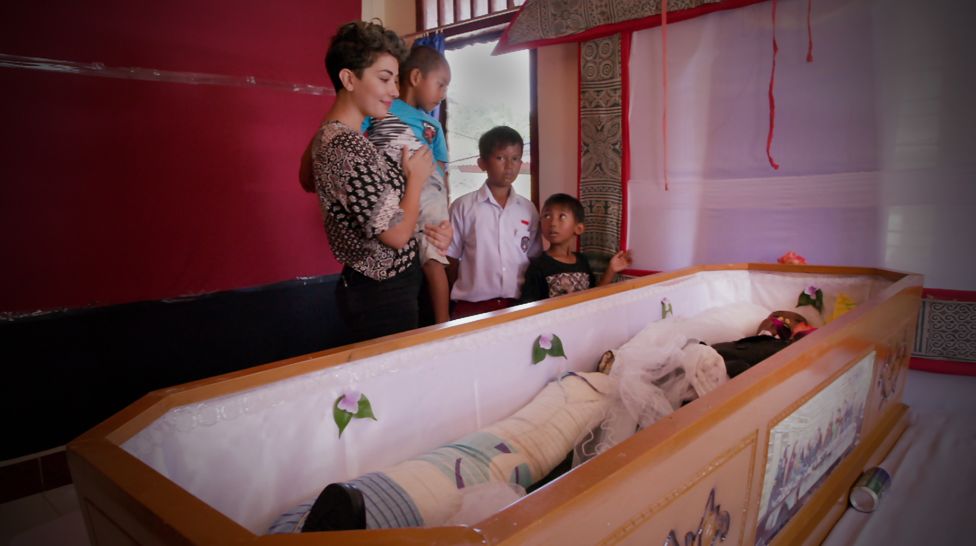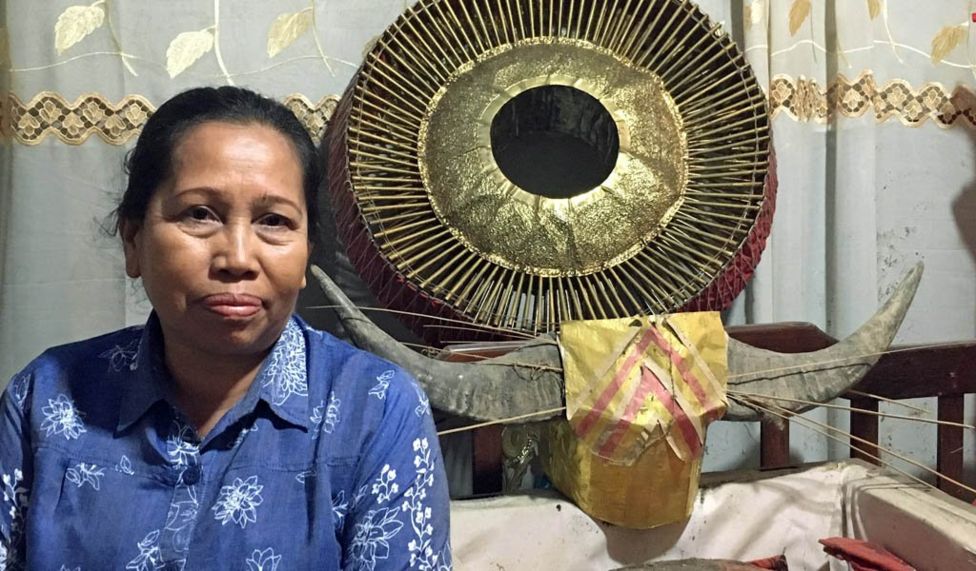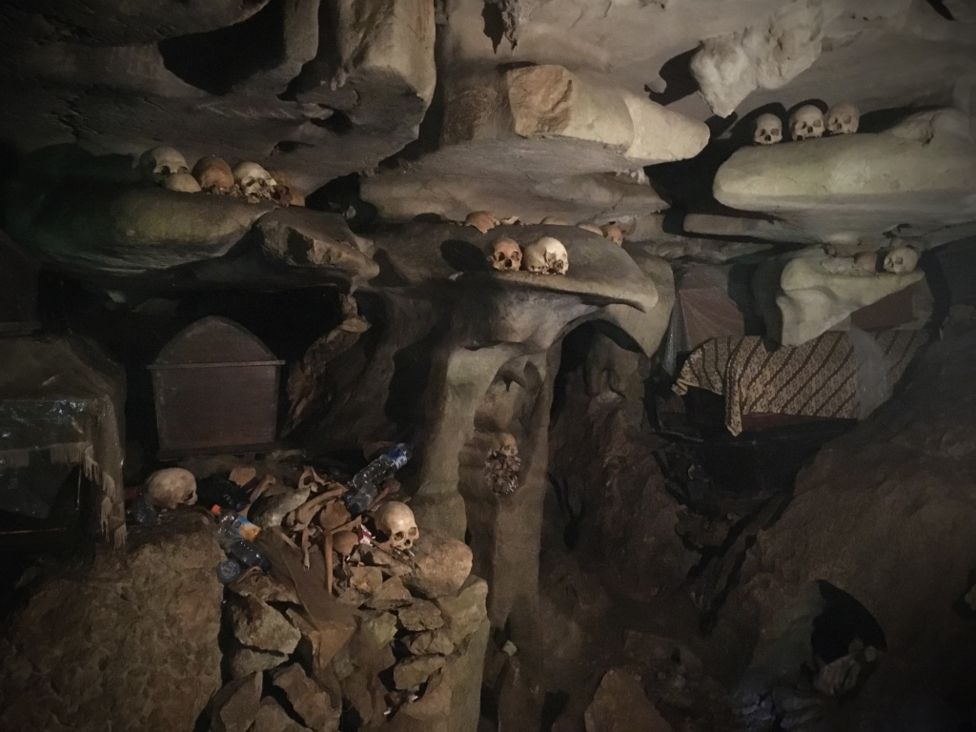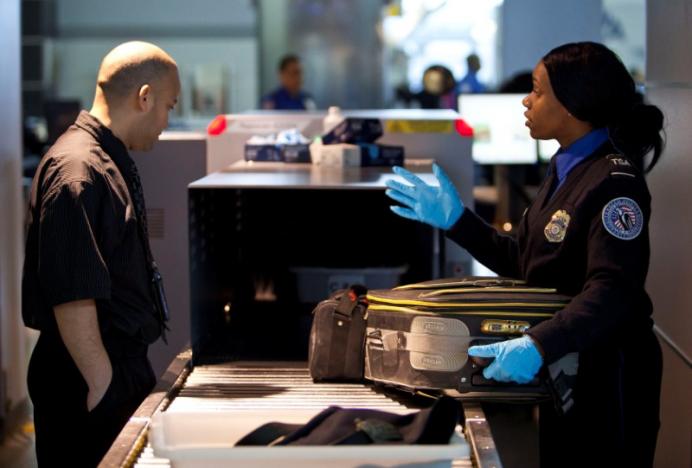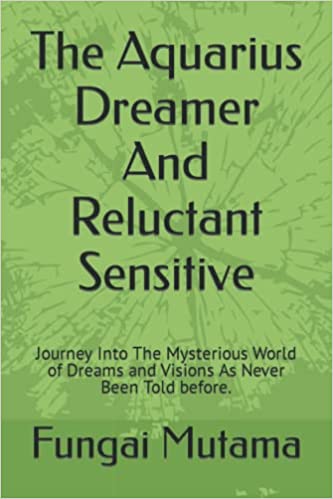With different cultures come different rituals and observations. None is more bizarre than sharing your house with your dead relative, parent or family member side-by-side as if they were still alive.
The dead person is treated like a living person. They are fed, bathed, have their clothing changed and they are never left alone. The lights are always on and are never left in the dark for fear of angering the deceased. In some cases, the dead are brought out, taken for a walk around the village and have pictures of them taken.
Such is the case with the Torajan people of Indonesia who still practice the old tradition of Aluk to dolo side-by-side with Christianity. Everyone wants to remember their dead except in this case, the Torajans are doing it in a different way that may seem unusual to most.
Warning: Readers may find some images disturbing.
Most of us don’t like to think or talk about death, but there are some people who do. In the Toraja region of Sulawesi, in Indonesia, the dead are a constant part of day-to-day life.
The plain wood-panelled living room, with no furniture and just a few pictures on the wall, is filled with chattering voices and the smell of coffee. It is an intimate family gathering.
“How is your father?” one guest asks the host, and the mood suddenly changes. Everyone glances at the small room in the corner, where an old man is lying on a colourful bed.
“He’s still sick,” replies his daughter, Mamak Lisa, calmly. Smiling, Mamak Lisa gets up and walks over to the old man, gently shaking him. “Father we have some visitors here to see you – I hope this doesn’t make you uncomfortable or angry,” she says.
Then she invites me to step inside and meet Paulo Cirinda.
My eyes are fixed on the bed. Paulo Cirinda lies completely motionless – not even a blink – though I could hardly see his eyes through his dusty glasses anyway. His skin looks rough and grey, dotted with countless holes, as if eaten by insects. The rest of his body is covered by several layers of clothing.
I have been staring for far too long when his young grandchildren playfully run into the room, and snap me back to reality.
“Why is granddad always sleeping?” one of them asks with a cheeky laugh. “Granddad, wake up and let’s go eat!” the other one almost shouts.
“Shhh… Stop disturbing granddad, he’s sleeping,” Mamak Lisa snaps at them. “You’re going to make him angry.”
Now, here’s the surprising thing. This man, Paulo Cirinda, died more than 12 years ago – yet his family think he’s still very much alive.
To outsiders, the idea of keeping a dead man’s body on show at home feels quite alien. Yet for more than a million people from this part of the world – the Toraja region of Sulawesi in eastern Indonesia – it’s a tradition dating back centuries. Here, animist beliefs blur the line between this world and the next, making the dead very much present in the world of the living.
After someone dies, it may be months, sometimes years, before a funeral takes place. In the meantime, the families keep their bodies in the house and care for them as if they were sick. They are brought food, drink and cigarettes twice a day. They are washed and have their clothes changed regularly. The dead even have a bowl in the corner of the room as their “toilet”. Furthermore, the deceased are never left on their own and the lights are always left on for them when it gets dark. The families worry that if they don’t take care of the corpses properly, the spirits of their departed loved ones will give them trouble.
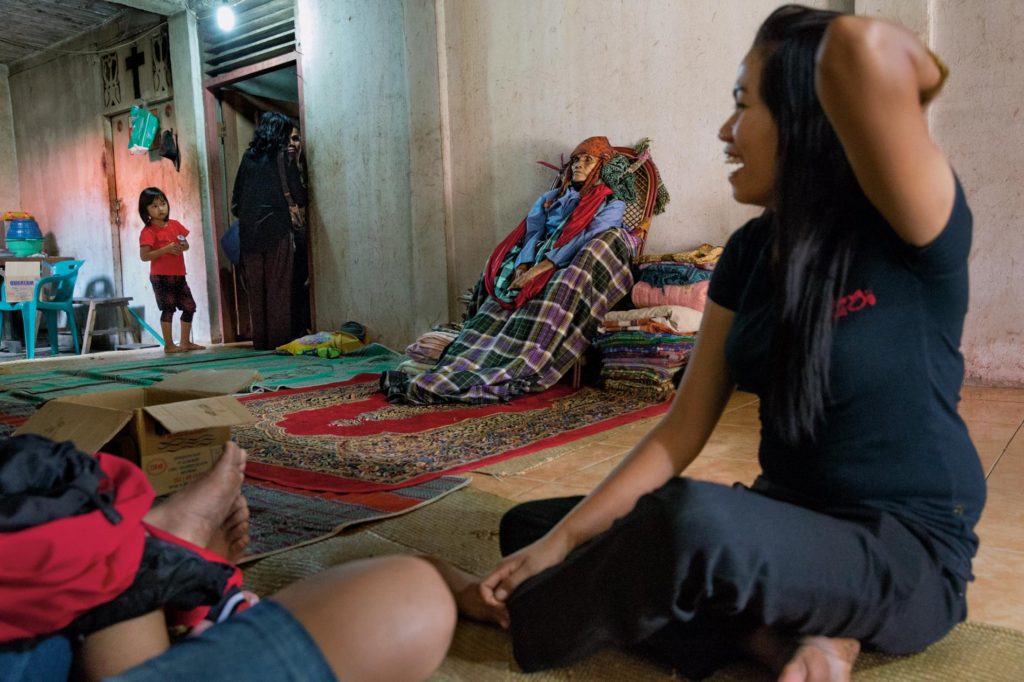
A family sitting in a room with their dead relative (checked blanket) as if they are part of the living. Credit: National Geographic
Traditionally, special leaves and herbs were rubbed on the body to preserve it. But nowadays, a preserving chemical, formalin, is injected instead.
It leaves a powerful chemical reek in the room.
Lovingly stroking her father’s leathery cheekbones, Mamak Lisa says she still feels a strong emotional connection with him. “Although we’re all Christians,” she explains, with hand on heart, “relatives often visit him or call on the phone to see how Dad’s doing, because we believe that he can hear us and is still around.”
Contrary to what I’m used to, I see no sign of fear of the dead here.

Even children are now used to the culture of living with the dead as part of everyday life. Credit: National Geography
My own father passed away some years ago, and he was buried almost immediately – before I had time to fully grasp what had happened. I still haven’t quite managed to deal with my grief.
To my surprise, Lisa tells me that having her father in the house has helped her to grieve. It’s given her time to adjust slowly to his new identity – that of a dead man.
During their lives, Torajans work hard to accumulate wealth. But rather than striving for a luxurious life, they’re saving up for a glorious departure. Cirinda will lie here until his family is ready to say goodbye – both emotionally and financially. His body will finally leave the family home during an unimaginably lavish funeral, after a grand procession around the village.
According to Torajan belief, funerals are where the soul finally leaves this Earth and starts its long and hard journey into Pooya – the final stage of the afterlife, where the soul gets reincarnated. Buffaloes are believed to be the carriers of the soul into the afterlife and that’s why families sacrifice as many of them as they can, to help make the journey easier for the deceased.
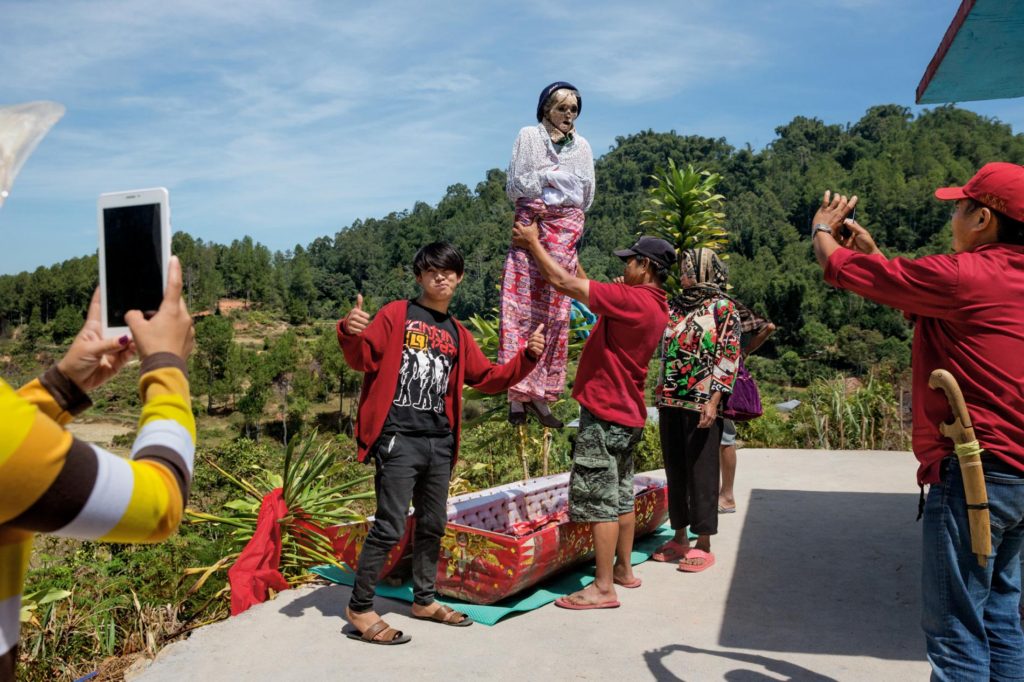
The dead are treated like the living and relatives can wash, change their clothing and take photos with them. Credit:NatGeo
Torajans spend most of their lives saving up for these rituals. Once the families have saved up enough, they invite all friends and relatives from all over the world. The wealthier the deceased when alive, the larger and more elaborate these ceremonies.
The funeral I attend is for a man called Dengen, who died more than a year ago. Dengen was a rich and powerful man. His funeral lasts for four days, during which 24 buffaloes and hundreds of pigs are sacrificed in his honour. Later, the meat is distributed among the guests, as they celebrate Dengen’s life and his coming reincarnation. His son tells me that the funeral has cost in excess of $50,000 – or more than 10 times the average annual income.
I couldn’t help but to compare this lavish, loud and colourful outdoor funeral – filled with dance, upbeat music, laughter and of course blood – to my dad’s. For him, we held a small ceremony with intimate family, in a small, dark and quiet venue. I am left with a very sad and dark memory of that day – in extraordinary contrast to what Dengen’s family will remember from his funeral.
After the funeral, it’s finally time to inter the dead.
Torajans are rarely buried in the ground. Instead, they are either interred in family tombs or placed inside or outside caves – as it’s a mountainous region, there are many of them. These caves are yet another place where the afterlife seemingly connects with this one. Sometimes winding for kilometres, they hold innumerable coffins and corpses, and even loose skulls and bones. Friends and family bring “necessities” for their dead relatives – often money and cigarettes.
In a tradition pre-dating photography, the images of dead noble men and women are carefully carved out of wood. Known as tau tau, these sculptures wear the clothes, jewellery and even the hair of the deceased – silent sentinels looking out over this world from another plane. On average they cost about $1,000 to make.
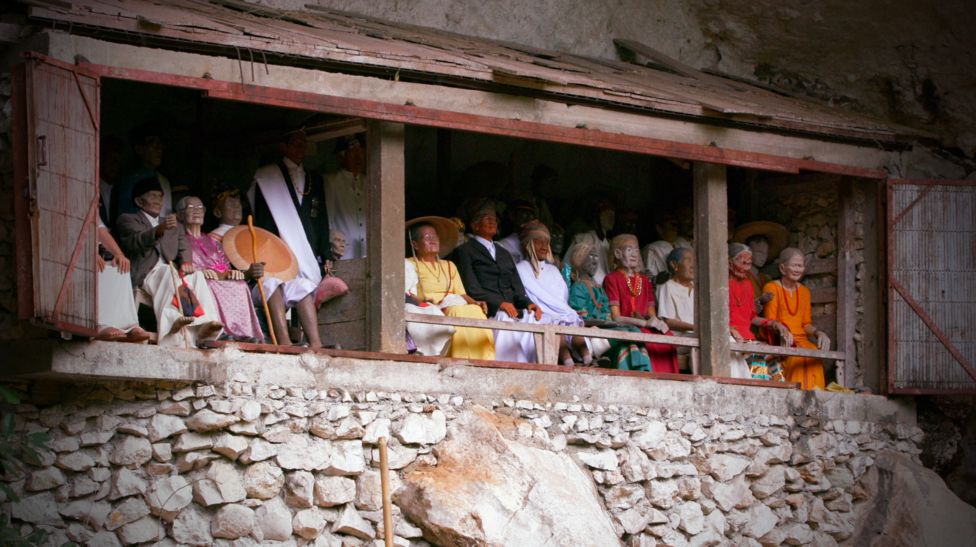
The living dead! Death is not the end. Ancient carvings called tau tau with dead person’s own hair and clothing are made and sit watch over the living. Credit: BBC
But even interment doesn’t mean goodbye. The physical relationship between dead and the living continues long after, through a ritual called ma’nene, or the “cleansing of the corpses”. Every couple of years, families take the coffins of long-departed relatives out of their graves and open them up, for a big reunion with the dead. At ma’nene ceremonies, friends and family offer food and cigarettes to the dead and lovingly groom and clean them. Then they pose with them for new family portraits.
Torajan professor of sociology Andy Tandi Lolo describes it as a way of maintaining “social interaction between those who are alive and those who are dead”.
After Sunday prayers, I accompany people from a Torajan village as they make their way from the church to a small square building with orange tiles and no windows. It’s a family tomb. Chanting mixed with the sound of women crying creates a surreal atmosphere. Everybody’s here for the ma’nene of Maria Solo, who died three years ago – they say she’s now 93 – and was placed in this family tomb a year ago. Now it’s time for her to come back out.

Children and family of the deceased preparing to wash and change her clothing before taking pictures and walking around her around the village. Credit: BBC
The men bring out a red cylindrical coffin decorated with geometrical patterns in gold and silver. On top of it, close family members place offerings to Maria – coca plant leaves, cigarettes, bitter nuts and fresh buffalo ears. But there is one more ritual that needs to be carried out before they open the coffin and that’s a buffalo sacrifice.
They finally open the coffin and once again, that strong odour of musk and formalin fills the air. The body of a small old woman lies motionless inside. Her white hair is neatly tied back exposing her thin face. Her mouth and eyes are half-open and her grey skin makes her look more like a stone statue than a dead woman.
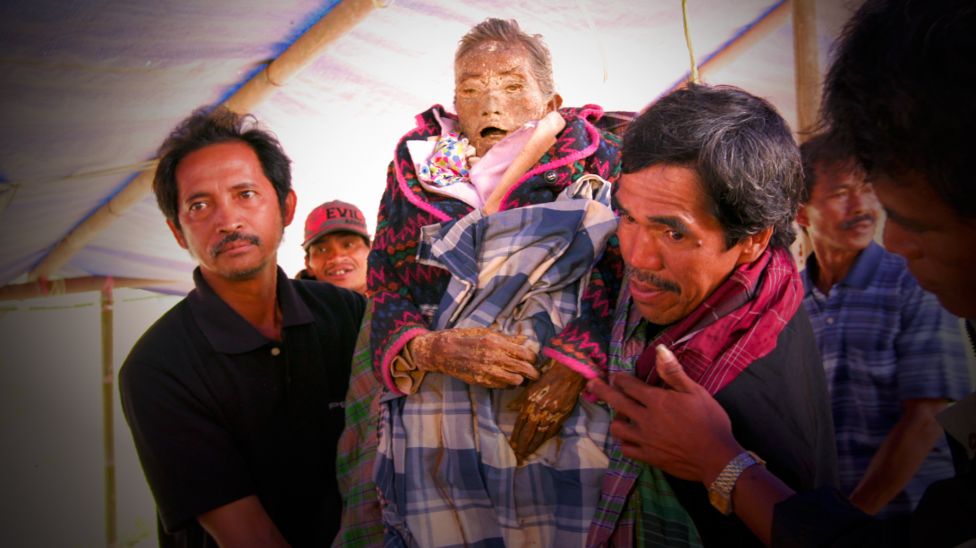
Relatives and children of the dead woman take pictures with the corpse (which they still treat as if it were alive). Credit: BBC
How do her children feel, seeing their mother like this? Her eldest son, a businessman wearing a baseball cap, who now lives in the Indonesian capital, Jakarta, seems very calm. He tells me that it doesn’t bother him at all – and not only that, it reminds him how patient his mother is and how much she loves him. Just like Cirinda’s family, Maria Solo’s relatives still refer to her in the present tense as if she weren’t dead at all.
Once the body is exposed, signs of grief and tension disappear. Even I stop feeling nervous. Another guest – particularly close to Maria Solo – is Estersobon, her daughter-in-law. She tells me that ma’nene lightens the burden of her grief and helps revive the memories of her long-departed loved-ones.
I tell Estersobon that I want to remember my late father the way he was when he was alive – and that I would worry that if I ever saw him dead, this would change the image I keep of him in my mind. But Estersobon insists that it makes no difference to the way family members remember the dead.
Once everyone has spent some time with Maria and taken a few family portraits with her, it is time to wrap her in a white sheet as symbol of changing her clothes. In many villages, they change the outfit for a new one and even take the corpse for a walk around the village. But these practices are slowly disappearing, as over time more than 80% of Torajans have turned away from the old animist religion, Aluk to dolo, and have become Christians. Little by little, the old ways are changing, as a result.
However, Christianity and Aluk to dolo have always coexisted, for as long as Christianity has been in this region. Andy Tandi Lolo says that when Dutch missionaries first arrived, less than a century ago, they tried to forbid animist religions altogether. By the 1950s, though, they had realised that if they wanted Torajans to accept the new faith, they would have to show flexibility, and allow them to continue their rituals.
In the rest of the world, these practices may seem bizarre. But perhaps the principles behind them are not so very different from those found in other cultures.Remembering the dead is something many of us try to do. The Torajans just take a very different approach.
Article published by BBC on 18 April, 2017.
Copyright ©2017 Manyika Rights Reserved.

